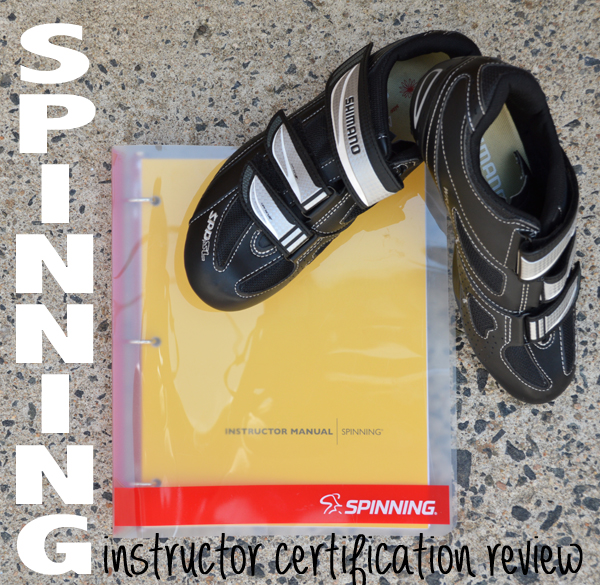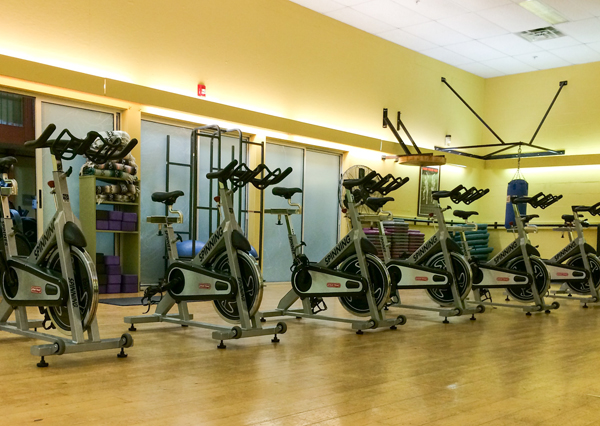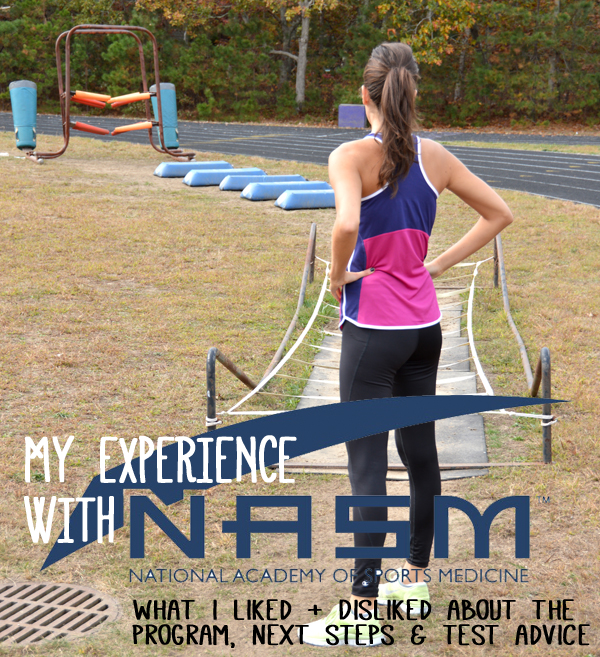 Man I feel like this post was years in the making! I talked about getting certified FOR-EH-VER (The Sandlot voice). Over Memorial Day weekend, I finally bit the bullet and went to a Mad Dogg Spinning® certification workshop, and then this past week I took the exam online to finish things up. I know, I know, my procrastination skills are impressive. Please hold your applause.
Man I feel like this post was years in the making! I talked about getting certified FOR-EH-VER (The Sandlot voice). Over Memorial Day weekend, I finally bit the bullet and went to a Mad Dogg Spinning® certification workshop, and then this past week I took the exam online to finish things up. I know, I know, my procrastination skills are impressive. Please hold your applause.
Before I get into all the details, I just want to remind you all of the difference between Spinning® and indoor cycling/”spin” so we’re all on the same page. I did a whole post about it HERE, but to summarize: Spinning® is based on outdoor cycling—anything you wouldn’t do on a road bike, you wouldn’t do on a stationary bike in a Spinning class. It’s what most people associate with traditional “spin”/spinning classes. Indoor cycling (also called “spin”) is this new wave of stationary bike workouts (think Soul Cycle) where you’re riding to the beat of the music (maybe not all the time), changing positions a lot, maybe even dancing a bit, doing push ups on the bike, and might have some hand weight upper-body portions as well.
If you don’t feel like reading through this whole post, here’s your two-sentence summary: If you want to teach traditional Spinning classes, this is a great program led by passionate and uber-informed master instructors—I highly recommend it. If you want to teach indoor cycling (the new trend in stationary bike fitness that involves a lot of movement, choreography, and upper body portions of the workout), it’s not worth the cost—don’t do it.
Why I Chose Mad Dogg Athletics/To Get Certified at All
Even when I was sure I wanted to start instructing, I went back and forth a lot about whether getting certified was even necessary. I had a lot of fitness professionals and current instructors tell me it was a waste of money and I shouldn’t do it. That advice, coupled with the facts that I already had group fitness experience under my belt from teaching at Btone, had this blog as a major fitness resume booster, aaaand have friends who just happen to own a spin studio…well, let’s just say things were stacked in favor of me not taking a certification course.
Ultimately though, I don’t just want to be a kickass instructor, I want to be an accredited, knowledgeable instructor. As a fitness professional, I am always trying to absorb as much information in the field as possible, and I figured if nothing else, I would learn proper form on the bike, safety/set-up tips, and the “WHY” behind stationary bike workouts. I like leading an awesome workout and then being able to explain why it was good for your body, why I had you move your body in those certain ways, and how things can be modified to accommodate both beginner and advanced students.
So why Mad Dogg Athletics? And why Spinning® when I knew I would be teaching indoor cycling? Well, I couldn’t really find any other program (at least not in the New England area) that looked even half as legit. It was pretty much my only option. Plus, after creeping around online and looking at the bios of some of my favorite instructors in Boston, the majority of them seemed to have all gone through Mad Dogg (even those not teaching a traditional Spinning program).
The Logistics of the Spinning Instructor Certification Program
The certification program costs $325. You sign up for a training session near you by going to the Spinning website and entering your zip code to see what’s closest and works with your schedule. After signing up, you’ll receive a text manual in the mail. They suggest you read through Phase 1 of it before your workshop.
The hands-on training session lasts all day (nine hours), and during it you’ll be on and off the bikes, working with a Spinning Master Instructor to go over proper form on the bike as well as hit the big topics covered in the manual. You probably spent ¾ of the time doing the classroom-esque learning, and the remaining hour and a half to two hours on the bikes. The first time you’re spinning is for a “form ride” and the second time is an actual class lead by your instructor (that’s the last thing you do during the day).
They emphasize heart rate a lot during the training, and it’s suggested you bring a heart rate monitor with you to the workshop. I went out and bought one just for that reason, but I would say it wasn’t totally necessary—so don’t worry if you don’t have one.
After the workshop is completed, you have 1 year to take the exam (it’s online, but also located in the back of your manual in case you’d rather mail it in for grading). Although you have a year, definitely just take it right after the workshop. It’s 50 questions, some multiple-choice and some True/False. It’s super easy considering it’s open-book, and definitely not something to stress over. The real meat of getting certified is in the all-day workshop—not the test.
If you attend the workshop and pass the test (80% and above is passing), you’re officially a Spinning® instructor, and get your certificate mailed to you after the exam.
My Experience Getting Certified
First off, the Master Instructor who led our training workshop, Angie Scott, was AWESOME. Super passionate about the program, an experienced cyclist, incredibly knowledgeable—she rocked. I went in totally on Team Indoor Cycling, but as class went on, I actually found myself reaching for the Spinning Kool-Aid(!!). It was a total testament to Angie.
As someone who’s never worked out on a bike that isn’t stationary (aside from leisurely bike rides), I found it fascinating to listen to Angie talk about the world of cycling and triathlons. Even though it’s not something I personally have an interest in doing, I just love learning about any and all things related to fitness. In the Spinning program, you don’t do anything on the stationary bike that you wouldn’t do outdoors, and I loved learning all the rationale behind it. A good example is sprinting. In indoor cycling classes you frequently sprint with very little resistance on the wheel so you can move your feet as fast as possible. In Spinning, you always have resistance on the wheel because in a cycling race, the person who pedals the fastest at the highest gear wins a sprint. Never would have thought of it like that before the certification program.
We also worked a lot with heart rate monitors, which I’ve never done before, and I loved learning about the ways you can use them to train smarter and more efficiently. I will say though, when I wore mine while riding the bikes, I found myself staring at my wrist the entire workout instead of just enjoying the class. That’s exactly what happens to me when I go to Flywheel and stare at the Torq board the whole effing class. It takes something away from the experience for me, so while I can’t see myself using one personally, it was great getting more familiar with a tool that could help me more efficiently train others.
To sum up the day: My initial skepticism turned into enthusiasm within the first hour of the workshop, but I still left feeling conflicted. Spinning or indoor cycling? Is there a happy medium? Can I teach indoor cycling classes while still incorporating some of the stuff I learned from the Spinning program? I think the answer is yes. I also think that at the end of the day, my passion for stationary bike workouts was born when I took my first indoor cycling class—that’s where my heart is, and despite the positive experience with the Spinning program, that’s what I want to teach.
Final Thoughts—Was It Worth $325?
For me personally, even though I loved the workshop, I have to say (with hesitation) “no.” But that’s because I ultimately don’t want to teach the Spinning® program. I like indoor cycling/”spin” classes—everything to the beat of the music, changing positions a lot, dancing around on the bike, adding in some upper body work—they’re so much fun! And I do think they are safe, as long as you keep the choreography within reason and emphasize proper form. That being said, if you’re an outdoor cyclist, triathlete, or just love traditional Spinning classes, then I would highly recommend Mad Dogg and this certification program. I love that it’s so hands-on, and if the other Master Instructors are anything like Angie, you’ll learn a ton.
Some things gained from the program that I’ll certainly use in my spin classes are the proper bike setup techniques; info about heart rate monitors and how to use them to better improve your training; and guidelines for proper form in each of the bike positions and execution of moves. Other than that though, I think what has prepared me most to teach is just the fact that over the last couple years, I’ve probably taken 500 classes with tons of different instructors at tons of different studios and gyms—everything from Soul Cycle to someone’s living room. I’ve learned what I like, what makes a great class, and picked up on instructing techniques from those rockstar teachers who make you leave class wanting to be them (you know the ones, right??).
So again, if you want to teach Spinning®, this program is great and a total must-do. If you want to teach indoor cycling/”spin”, however, it’s not really necessary (although some gyms might want you to have a certification so you look official on paper as well as on the bike). I recommend you take a ton of classes (especially at the studio you want to teach at!), practice your ass off, work on your cardiovascular stamina, put together an epic playlist, and be familiar with the basics of proper form on the bike. The certification doesn’t hurt, of course, but it’s not very applicable to this new trend in stationary bike workouts.
Any instructors out there go through Mad Dogg? What are your thoughts?










